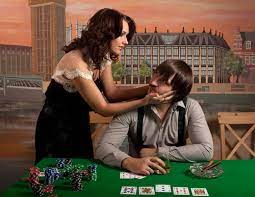You might have wondered if there was a way to stay sober when playing the game of poker, and if there was a way to beat the odds and make some real money as a recreational player. Well, there is, but it’s not for gambling, it’s for life coaching!
I know, what you’re thinking is that there is a secret weapon that the pros use to remain calm and collected, all this time spent strategizing and worrying, and they use it at the poker table, and you can too?
Well, there is a method of playing poker that enables the player to remain calm Regardless of Record-breaking Bluffs, Poor Poker & Losing sessions, and other emotionally charged situations. This method is called Simple Tournament Strategy (STTS), and it’s quite simple to learn.
In STTS, the player simply follows the rules of the hand, the blinds and their relative position but adds a simple twist to it. The ace in the hole is de-facto community cards, and should not be played normally. It, of course, can be used to complete a draw, but if you have A-A and the card falls on the flop, whatever hand you have is the best hand. This is STTS.
A Simple Tournament Strategy for the Ace:
While you are holding the ace, and there are multiple players left to act behind you, you want to make the best hand you can based on the six cards available to you. The best hands are:
nine out of ten would be the most you would want to call to catch, and remember you are looking for the ace as well. The odds of catching a nine on the flop are about 13% while the odds of catching a queen on the flop are about 22% (this does not take into account the other two cards in the deck). While you can catch a low card (like a two), you have slim chances of catching a nine or a queen. While you can still make a hand and catch a nine, you are better off catching another low card.
Four out of ten would be the second best hand. This would be sufficient to go for because you have the ace, and if the ace be coupled with another card of the same suit like ten, then you have a set. And you definitely would not want to go and pair the ace with a king, as that would just ruin your hand.
Six out of ten would be the third best hand. If you have the ace and two other cards, you have a set, and you want another card of the same suit. So six outs are the best.
Once you catch your flush, you are all set. You have the ace, a set, and the only thing to do now is to hope that the other players catch what you have done. You want to base your strategy on the previous actions of the other players. If you have known for a while that they will chase their draws, then you can just save yourself some money and just bet aggressively. If you are at a tight table, then some aggressive bets here and there may not get the desired results.
Four out of ten is the fourth best hand. Here you still want to catch the flush, but you want to be a bit more aggressive than the other players. Just keep in mind though that you want your bets to be justified by your hand.
Once you get a full house, things are a bit more tricky. Usually you will have a full house a strong hand, in which case you want to bet and then compare the hands later. Some people like to semi-bluff occasionally, whether playing hold em or another type of poker. It is entirely up to you to adjust the pace of your play and your own style of play to the situation you are in.
This is the basic strategy of bluffing: you delay the gratification of your hand, making your opponents conditionally think that you might have a good hand, then you play aggressively and raise the bets. Sometimes you may even wait for the “Bolagila” (the poker hand with the highest combination of cards) to go in, although that might just be wishful thinking on your part.
More advanced poker strategy includesVariations to the above strategy. One might pretend to have a bad hand, just to make an opponent bet more. Another might try to set up a check raise, so they can bet and then you raise, while wagering enough to keep the opponents in the game. You can mix things up in any way you like.
Showing Your Cards
When you play Texas hold em, a friendlier practice is to not show your cards to your opponent.
